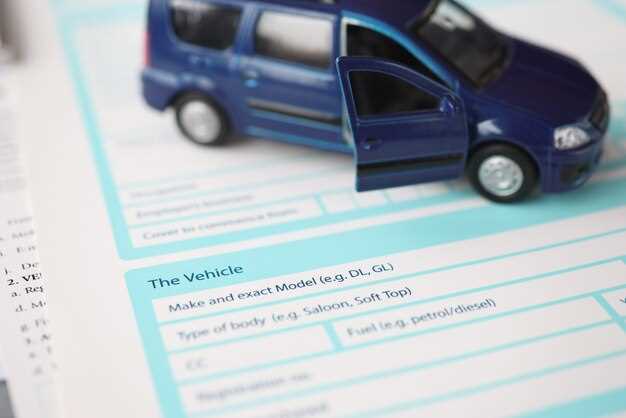
When planning to ship your vehicle, understanding the required paperwork is crucial to ensure a smooth and hassle-free process. The documents necessary for car shipping can vary depending on factors such as the shipping destination, the method of transport, and the regulations in place. Familiarizing yourself with these essential documents will not only expedite your shipping experience but also help you avoid potential delays or complications.
At the core of car shipping documentation are the vehicle title, registration, and the bill of lading. Each of these documents serves a unique purpose and is vital for the successful transfer of ownership and responsibility during transit. Additionally, other paperwork may be needed, such as proof of insurance and a valid identification, which help confirm your authority over the vehicle being shipped.
In this article, we will delve into the specific documents required for car shipping, providing a comprehensive overview designed to guide you through the paperwork process. By understanding the requirements ahead of time, you can ensure that your vehicle reaches its destination without unnecessary delays, allowing you to focus on what truly matters.
Understanding the Essential Paperwork for Vehicle Transport
When preparing for vehicle transport, understanding the required documents is crucial to ensure a smooth shipping process. The essential paperwork typically includes the vehicle’s title, registration, and insurance information. Each of these documents serves a vital role in verifying ownership and protecting both the shipper and the transportation company.
The vehicle title is the primary document that demonstrates ownership. It must be in the name of the person arranging the transport, as discrepancies can lead to delays or issues during transit. Alongside the title, the current vehicle registration serves to confirm that the vehicle is legally permitted to be on the road. Ensuring that registration is up to date is important for compliance with local laws.
Insurance information is another critical component. It provides proof that the vehicle is covered in case of accidents or damage during transport. Many shipping companies require a copy of the insurance documentation, which should clearly outline the coverage limits. This protects both the vehicle owner and the transport provider.
Additionally, a bill of lading is often required. This shipping document outlines the terms of the transport agreement, including pickup and delivery details, and acts as a receipt for the vehicle being shipped. It’s important to review this document thoroughly prior to signing, ensuring all information is correct.
Overall, gathering and understanding these essential documents can significantly ease the vehicle transport process. Proper documentation not only facilitates smoother communication with the shipping company but also safeguards the owner’s interests throughout the transport journey.
How to Prepare Your ID and Ownership Proofs for Shipping

Preparing your identification (ID) and ownership documents is crucial when shipping a vehicle. These documents serve as proof of ownership and your identity, ensuring a smooth shipping process. Here’s how to get these documents ready.
1. Gather Necessary Documents
First, collect all required documents, which typically include:
- Your government-issued ID (e.g., driver’s license or passport).
- The vehicle’s title, showing you are the legal owner.
- A bill of sale if the car was purchased recently.
- Any registration documents that may be needed.
2. Verify Your ID
Ensure that your ID is valid and not expired. Double-check that the name on your ID matches the name on the vehicle title. If you have recently changed your name, you may need to provide documentation to reflect this change.
3. Prepare Ownership Proofs
Make sure the vehicle title is free of liens, which are legal claims on the vehicle. If applicable, include all signatures required for a smooth transfer of ownership. You might also consider photocopying all documents for your records.
4. Organize Your Documents
Keep all documents in a safe and easily accessible location. Use a folder or an envelope to organize them neatly. It’s advisable to have both electronic and physical copies of these documents in case they are lost or damaged.
5. Communicate with the Shipping Company
Before shipping, communicate with your chosen shipping company to confirm any specific document requirements they might have. This step ensures you are fully prepared and can avoid delays.
6. Review Preparation Guidelines
Lastly, always check the preparation guidelines provided by your shipping company. Different companies may have varying requirements regarding ID and ownership proofs, so it’s essential to adhere to their specific rules.
Common Mistakes to Avoid When Submitting Shipping Documents

One of the most critical aspects of car shipping is ensuring that all required documents are submitted accurately and on time. However, several common mistakes can lead to delays, additional costs, or even rejection of your shipment. Below are key errors to avoid.
Firstly, a frequent mistake is not providing a complete Vehicle Identification Number (VIN). The VIN is essential for verifying the vehicle’s identity and ensuring that it matches the paperwork. Omitting or incorrectly entering this information can result in significant shipping issues.
Another common error is failing to sign the shipping documents. Many individuals overlook the importance of signatures, believing electronic submission does not require this step. However, proper authorization is crucial for validating the shipment process.
Inaccurate weight and dimension measurements of the vehicle can lead to miscalculations in shipping costs. It’s essential to double-check these details and provide precise information to avoid unexpected fees or complications.
Additionally, many shippers forget to include proof of ownership, such as the vehicle title or registration. This document is crucial for customs clearance and should always accompany the shipping paperwork to avoid delays.
Another mistake involves mislabeling the type of shipment. For instance, if you label a vehicle as ‘personal’ when it is intended for commercial use, it can trigger a review process that may delay shipping. Always ensure that the shipment type reflects its true purpose.
Incomplete contact information can also create issues. If the shipper or recipient’s details are missing or incorrect, communication breakdowns can occur, leading to confusion regarding delivery schedules.
Lastly, waiting until the last minute to submit documents often leads to mistakes. Take the time to collect and verify all necessary paperwork well in advance of the shipping date to ensure a smooth process.



